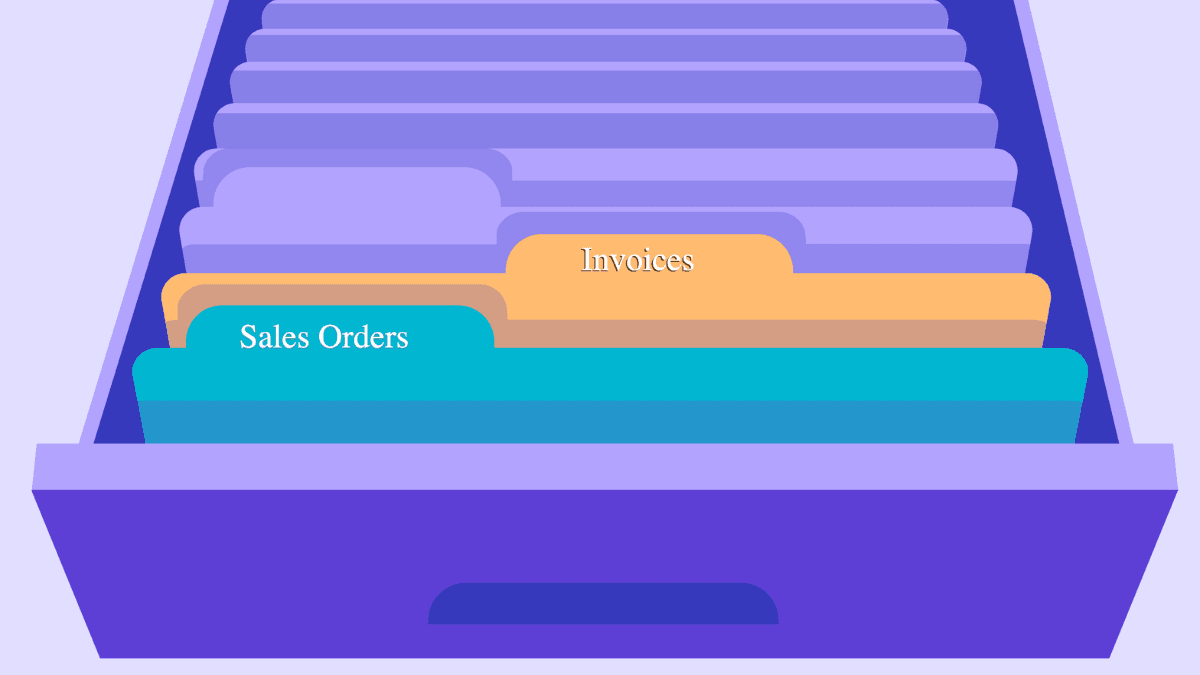Is a Sales Order the Same as an Invoice?

When managing a small business, a bit of behind-the-scenes bookkeeping is required to keep operations running smoothly. While it can feel like overkill to methodically document every stage of a job or project, you will thank yourself later when your business scales up and gets busier.
Make a Free Invoice NowSales orders and invoices are two useful organizational tools for business owners. Whether selling goods or services, you must communicate clearly, effectively, and legally with clients. These documents let customers know when and how to pay you and will enable you to track progress and payments accurately.
What is a Sales Order?
You may or may not be familiar with sales orders as they are less commonly used than invoices. A sales order is a document created when a client or customer orders a product or service. Essentially, it’s a written agreement confirming the seller will follow through with the customer’s order.
Unlike an invoice, sales orders are not strictly necessary to get paid. New freelancers and small business owners commonly avoid them, particularly those selling services instead of products. Under some circumstances, sales orders bring value and nuance to bookkeeping procedures, so it’s worth learning about them before deciding whether or not to incorporate them into your sales system.
What is an Invoice?
An invoice is a document that requests payment, records sales, and creates binding legal agreements with articulated payment terms.
Think of an invoice as a bill. An invoice is a document you send to customers to tell them how much money they owe, what products or services they owe for, how they can pay, and when payment is due. It is standard practice to send an invoice after (or concurrent with) the completion and delivery of the work associated with the invoice.
For large, long, or complex projects, freelancers often use partial payment invoices as requests for deposits or progress payments at pre-negotiated intervals.
Should You Use Both?
Sales orders and invoices work well together to make order fulfillment smooth. For many freelancers, sales orders can be very informal — via a client phone call, appointment booking, or email request. Typically, businesses that sell goods rely on sales orders, while companies that sell services can work without them. If you’re dealing with inventory or orders you can’t immediately fulfill, a sales order is the only sale record until you generate an invoice.
When considering what to incorporate into your business’s sales system, the question isn’t whether to use sales orders or invoices—it’s whether to use both or rely on invoices alone. Consider the product or service you sell and the scale of your business. A freelance health coach who only books two monthly clients might find sales orders unnecessary. Their invoices can serve as sales records for bookkeeping purposes.
However, a DIY crafter who sells a few hundred hand-made hair clips on Etsy monthly needs to use sales orders. The orders keep accounting records organized with such a high monthly sales quantity. It’s important not to rely solely on the order tracking system built into Etsy or any other online marketplace. Keeping track of sales orders and invoices separately from the marketplace protects freelancers from losing all of their data if they ever leave the marketplace or the site crashes.
How to Create a Sales Order
A sales order is technically an internal document. Freelancers don’t necessarily have to issue sales orders to clients – clients give them the information needed to complete a sales order. The order is really for the freelancer’s accounting, but plenty of people still provide copies of sales orders to clients to prove the order will be processed.
All sales orders need to include the following details at the bare minimum:
- Description of goods or services ordered and their itemized costs;
- Document issue date;
- Fulfillment date;
- Payment schedule and terms; and
- Total amount to be billed.
How to Create an Invoice
Invoicing is straightforward. An invoice is a record of your payment request, so a neutral third party should be able to interpret the contents of the invoice in case any payment issues or discrepancies arise. At the very least, any invoice needs to include the following information:
- Description of goods or services and their itemized costs;
- Document issue date;
- Payment schedule and terms; and
- Total amount due.
Using an invoice generator like Invoice Maker will significantly streamline your invoicing process, offer many payment options for clients, and keep all invoices secure in one place. But remember – when using an online invoice generator, always back up invoices on a hard drive or private cloud.
Best Practices for Ordering and Invoicing
For those choosing to use both sales orders and invoices for administrative support, here is a list of best practices to get the most out of the paperwork.
- Add eCommerce to Your Website: Set yourself up with automatic sales orders by allowing customers to initiate orders seamlessly through your website.
- Create Custom Templates for Repeat Clients: If you have a client that buys the same thing from you monthly, keep a file of recurring sales orders on hand to reuse.
- Create Sales Orders Immediately: For a sales order to serve its purpose, you must create it immediately when you accept the order request.
- Reconcile Sales Orders and Invoices: One bonus of using both documents is they can serve to double-check each other. When managing bookkeeping, ensure that every sales order has a corresponding invoice and that the total sales from orders match the total sales from invoices.
- Save Branding for Invoices: Because sales orders are internal documents, it’s unnecessary to invest time or resources into adding a logo, branding, or other design elements unless you send sales orders to clients as confirmation of receipt.
- Use Sales Orders as Invoice Templates: In most cases, you can simply copy and paste the information from a sales order into an invoice, add payment terms, and turn around the invoice.
- Use Software: Accounting software is the best ally to get all of a business’s dealings on paper. QuickBooks allows you to create sales orders and invoices on the same platform, which is the best defense against losing track of data and documents.
Delegating Sales Flow
Understanding how sales orders and invoices work can help scale a business and delegate aspects of its daily operations. One of the most challenging parts about being a one-person shop is that you can never step away from “the office.” How do you take a vacation, pursue continuing education, care for a loved one, or have a child when your business could grind to a halt as a result?
Only 25% of small businesses report using automated processes. The ability to delegate responsibilities to an employee or partner is a pipe dream for solo freelancers. Automating administrative tasks as much as possible can make or break your business. Utilizing resources like sub-contractors and freelance-friendly software combined with an organized, simple, and straightforward accounting system will allow any freelance business to operate smoothly.
The Tedious Side of Success
The goal of every small business is to close sales. It can be easy for solopreneurs to get so focused on sales numbers they forget or don’t have the energy to handle their business administration. Learning the ins and outs of business accounting by using tools like sales orders and invoices can make your business more flexible, scalable, and responsive to changing contexts.
It’s worth the time and effort to become an admin pro.


